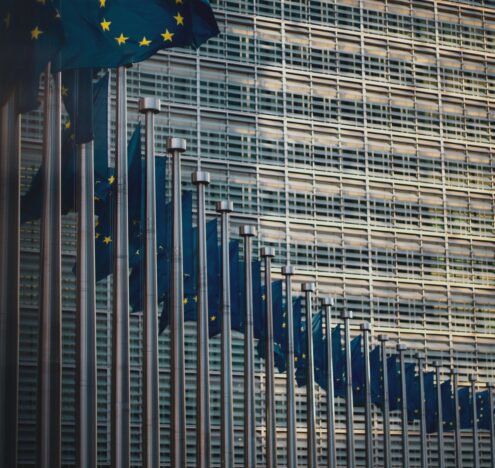Russia’s invasion of Ukraine has proven to be brutal and catastrophic. Justice for the victims must be sought, but there is an even greater imperative to stop the bloodletting immediately, both for the sake of Ukraine and for returning the global system back to an imperfect but more stable equilibrium. Further escalation of the Russia-Ukraine war and accelerated military preparations, including redeploying the US nuclear arsenal, are not the answer to our present predicament.
Steps toward peace would simultaneously put the world economy back on track, reignite the global consensus to halt climate change, and, most importantly, put the dangerous nuclear genie back into the bottle, where it had been blessedly dormant (or nearly so) for some decades. For the last nine months, Americans have been enthralled with the “good war” in Ukraine, hoping to cleanse any sins accumulated over the course of the United States’ previous “endless wars.”
The Chairman of the Joint Chiefs of Staff General Mark A. Milley’s calls for peace talks angered the Ukrainians, but this likely reflects his deep knowledge of both the military situation and the immense costs that this war is imposing on all concerned, including — and especially — Ukraine. Even though Russia’s retreat from Kherson this month is encouraging and a testament to the fighting spirit of Ukraine’s army, the war is still raging on with no real end in sight. The United States, therefore, needs to make straightforward, common-sense diplomatic changes to repair the world order so that it can function minimally to support peace and development. It is essential to substantially lower the temperature of great power tensions, starting with Russia, but in relations with China as well.
In other words, Washington must be more cognizant of tendencies toward threat inflation. As I explain in research for Brown University’s Cost of War project, this involves the United States being careful about assessing Russian military weaknesses against Europe’s simultaneous military strengths, as well as the nuclear paradox that results from this sharp asymmetry.
THE TRADITION OF THREAT INFLATION
Without a deep familiarity with the Cold War, Americans might not know how deep the threat inflation tradition goes in US national security policy. While Washington was right to help European governments get back on their feet after World War II, the fear of a communist resurgence caused the United States to take all kinds of horrendous actions in the 1950s, from sponsoring coups in countries like Iran and Guatemala to threatening nuclear war over Korea, Taiwan, and Indochina.
Cooler heads must prevail, insisting on restraint, negotiations, and ultimately, yes, compromise. The alternatives are escalation, increased horrific destruction, and more playing at nuclear poker.
In the 1970s, exaggerations of the threat posed by Vietnamese communism would indeed cost the lives of millions, including tens of thousands of young Americans. Yet, another attempted coup against the Cuban Revolution brought the world to the brink of apocalypse, while the infamous “missile gap” ensured that both superpowers would nearly bankrupt themselves, filling out their nuclear arsenals. Such threat inflation tendencies continued to spawn proxy wars well into the 1980s with immense costs across Africa, the Middle East, Central Asia, and Latin America.
The Ukraine war has also partly resulted from the process of threat inflation. Unwarranted fears helped propel multiple rounds of NATO expansion, which set off a spiral of insecurity, humiliation, paranoia, and nationalism in Moscow with predictable results. Moreover, skillful diplomacy could still have averted war in 2021 if the Minsk Accords were followed and if Ukraine had declared itself neutral. This does not excuse President Vladimir Putin’s terrible decision to use force but recognizes that the West also has some definite culpability in the Ukraine tragedy.
The Biden administration’s new National Defense Strategy may be correct in suggesting that Russia is not the Pentagon’s top priority, but it seems to nevertheless misdiagnose the problem by labeling Moscow as an “acute threat.” The strategy accuses the Kremlin of trying to establish “an imperial sphere of influence” and aims to weaken Russia through “cost imposition.” Unfortunately, these strategies fail to see the complexity of identity and security dilemmas confronting people throughout the collapsed Soviet empire. In dusting off the old Cold War playbook, Washington is fanning the flames of global instability and creating the seeds for intensified arms racing and dangerous future crises. It’s all quite unnecessary and does not serve US long-term interests.
DEFENSE BUDGETS AND THE NUCLEAR PARADOX
The catastrophic war in Ukraine that resulted from the brutal Russian invasion has already killed and wounded over 200,000 soldiers, with the number of civilian casualties constantly rising. Russia has obliterated whole cities and towns in Ukraine. But a major lesson that strategists and scholars of international relations take from this war is not Russia’s military strength but rather its weakness. Russia’s once impressive army was unable to conquer Kyiv and has not even succeeded in clearing the Donbas. Ukrainian aircraft are still flying despite Russia’s much stronger air power. And the vaunted Black Sea Fleet, which has hardly afforded the Kremlin any advantage, suffered the humiliation of seeing its flagship sunk by Ukrainian missiles after failing to deliver the sought-after capture of Odesa.
Yet, these results are not surprising for those who have followed the Russian military for the last several decades. Indeed, the Russian armed forces had been neglected, for the most part, since the collapse of the Soviet Union and only seen quite minimal equipment upgrades. The Russian defense budget in 2021 amounted to under a tenth of the US defense budget and just 6% of the NATO defense aggregate. Moreover, Russia’s rather small and underfunded forces have been stretched thin, guarding vast frontiers from the Caucasus to the Arctic to Central Asia to the Kurile Islands.
As it turns out, the one area of Russian military modernization that has seen an across-the-board upgrade is in the domain of nuclear weaponry, which is not a coincidence. Russia’s conventional military weakness, along with its enormous borders and unstable proximate regions, has caused the Kremlin to invest its scarce resources in the “ultimate weapon.” However, this leads to a nuclear paradox in strategic interactions between the West and Moscow. For example, Russia’s conventional military weakness may appear to invite escalation by the West and its friends in a variety of uncertain situations, especially with respect to Ukraine.
The possibility of success in defeating and further humiliating the Kremlin caused Russian leaders to repeatedly look for unconventional solutions, namely, the threat of resorting to the use of nuclear weapons. A glimmer of good news on that score was Putin’s statement on Oct. 27, 2022, where he said, “We see no need for that,” referring to the possible Russian use of nuclear weapons in Ukraine. Nevertheless, earlier statements by the Russian leader certainly hinted at the use of nuclear weapons, and major battlefield reverses for the Kremlin, such as the fall of Kherson, could easily put a Russian concept of nuclear use back on the table, unfortunately.
THE NEED FOR COOLER HEADS
President Joe Biden recognized the nuclear dangers of the present Ukraine war when he said earlier in October that Putin’s threats “amounted to the most serious ‘prospect of Armageddon’ in 60 years.”
The Biden administration’s new Nuclear Posture Review has some positive elements, including underlining the importance of arms control “dialogue [and] high-level engagement” with competitors, including Russia. Yet, by attempting to stretch extended deterrence into the Ukraine war by presently “modernizing US nuclear weapons forward deployed in Europe,” the administration has further raised nuclear tensions and even opened the pathway for that tragic and unnecessary conflict to potentially engulf the planet in a nuclear war. Indeed, the Russian military press noted the arrival of the USS Rhode Island in the Mediterranean in early November 2022 and took this deployment as further evidence that the “Americans have a doctrine of limited nuclear war.”
Perhaps then, it’s no surprise that the US president appears to have been rightly reflecting on the dangers of the Cuban Missile Crisis. Two of the key lessons of that epochal crisis were indisputably the need for direct and continuous communications between adversaries, as well as the all-important imperative for restraint in the nuclear era.
A third lesson also needs to be considered by contemporary strategists and diplomats, and this concerns geography and overreaching. Just as Nikita Khrushchev’s reckless and ill-considered lurch into America’s backyard led in short order to bring the United States and the Soviet Union to the brink of global nuclear war during the Cuban Missile Crisis, the United States’ long flirtation with Ukraine is having similarly destabilizing effects. Stirring up a hornet’s nest of irrational nationalism and paranoia in Moscow, the attempt to bring Kyiv into the US-European sphere represents strategic overreach and has again brought the world to the brink of disaster.
Cooler heads must prevail, insisting on restraint, negotiations, and ultimately, yes, compromise. The alternatives are escalation, increased horrific destruction, and more playing at nuclear poker — thus gambling with the very future of life on earth.
Lyle Goldstein is Director of Asia Engagement at Defense Priorities and a visiting professor at the Watson Institute of Public and International Affairs at Brown University.





















